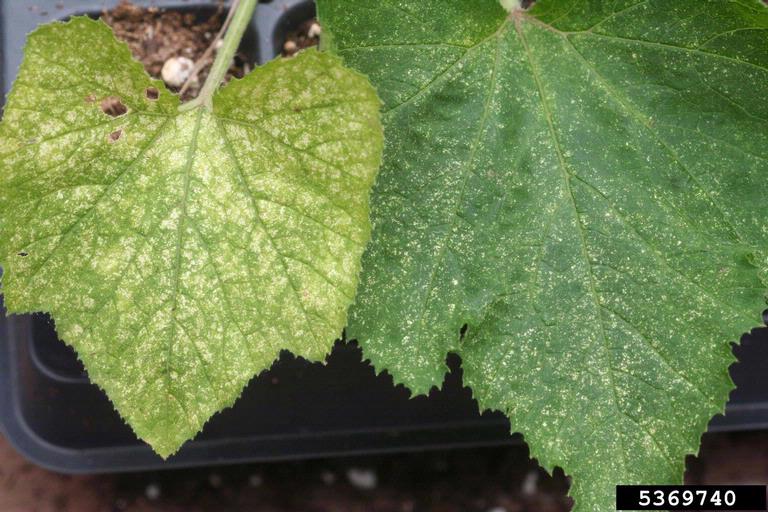"Spider mites are members of the Acari (mite) family Tetranychidae, which includes about 1,600 species. They generally live on the under sides of leaves of plants, where they may spin protective silk webs, and they can cause damage by puncturing the plant cells to feed. Spider mites are known to feed on several hundred species of plant.
Spider mites are less than 1 mm in size and vary in color. They lay small, spherical, initially transparent eggs and many species spin silk webbing to help protect the colony from predators; they get the 'spider' part of their common name from this webbing. Hot, dry conditions are often associated with population build-up of spider mites. Under optimal conditions (approximately 80ºF (25ºC)), the two-spotted spider mite can hatch in as little as 3 days, and become sexually mature in as little as 5 days. One female can lay up to 20 eggs per day and can live for 2 to 4 weeks, laying hundreds of eggs. A single mature female can spawn a population of a million mites in a month or less. This accelerated reproductive rate allows spider mite populations to adapt quickly to resist pesticides, so chemical control methods can become somewhat ineffectual when the same pesticide is used over a prolonged period." (wikipedia, Spider Mites)
 |
| spider mite damage photo courtesy of wiki gardener |
Spider mites are just that, they're mites. They are found most often on plants growing in a hot and dry house. I'm not sure what kind of plant you have that is experiencing the infestation, so I will assume it's a houseplant. First, take the plant outside, if you can, and give it a spray from the hose, making sure you reach the undersides of the leaves. Once dry you can take it back inside. This can be repeated and, if the problem persists, use a spray of insecticidal soap of the leaves, upper and beneath. Insecticidal soap is a mild insecticide which is effective on spider mites, among others. Follow the directions on the bottle.
To prevent spider mite problems, don't let the soil become overly dry and mist the plant regularly with room temperature water. Think of the second knuckle guide wherein you insert your index finger in the soil up to the second knuckle. If the soil feels moist, don't water. If it is dry, water and if in doublt, water. A more humid environment will help keep spider mites away.
If the plant is outdoors, hose with a strong steady spray and repeat every few days. Keep an eye on the plant and water more frequently and thoroughly. Insecticidal soap may be applied, if necessary.


1 comment:
I get spider plants occasionally on my houseplants.I've never found insecticidal soap to be effective, they always come back. Now I use tissue paper soaked in alcohol or just water and wipe them off the plant. I have to re do it every few months. I have the same problem with scale. If you keep on top of it and wipe the infestation away as soon as you see it, it doesn't take much time. I always wash my hands after doing it so not to spread the mites to other plants.
Post a Comment